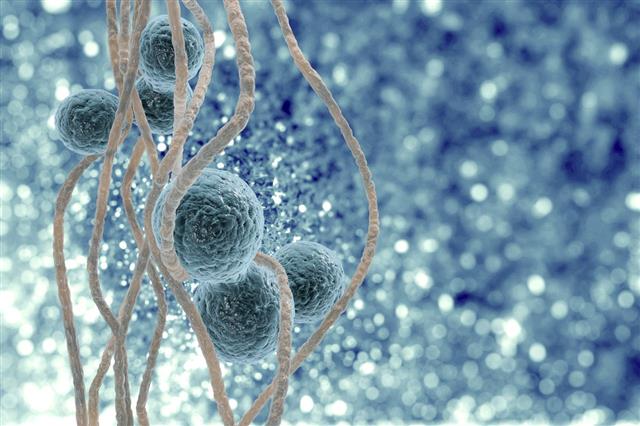
The cell wall is an important structure found in plants, bacteria, algae and fungi, but is missing in animals. The following article provides some information on the structure and functions of a cell wall.
Cells are the functional unit of all living organisms on this planet. Every cell is composed of many little structures called ‘organelles’, which are specialized to carry out vital functions.
A cell wall is an important and distinct organelle, present in plants, bacteria, algae and fungi. It may also be found in some archaea. It also happens to be a special feature that helps us distinguish a plant cell from an animal cell. Although small in size, the cell wall carries out a number of functions which form the basis of a plant’s life process.
In plants, the cell wall is composed of polysaccharides which are complex carbohydrates built from monosaccharides. In simple words, it is composed of cellulose, hemicellulose, pectic polysaccharides, lignin, protein, certain lipids and water. In case of algae, cell walls contain either polysaccharides or a variety of glycoproteins, or both; fungi have a cell wall consisting largely of chitin and other polysaccharides, and the cell walls of bacteria are made of peptidoglycan, which is composed of polysaccharide chains cross-linked by unusual peptides containing D-amino acids.
Cell Wall Functions in Plants

In a plant, the cell wall is formed during cell division itself, when the cell plate is formed between daughter cell nuclei. After its initial formation, the cell plate becomes a primary cell wall, and over a period of time, thickens to form the secondary cell wall. This thickening takes place outside in, causing the lumen to shrink as the cell wall moves from being a primary cell wall to a secondary cell wall. It is widely considered that this thickening takes place by apposition.
Determining Shape, Strength and Support
The cell wall acts as a skeleton and is primarily responsible for maintaining or determining the shape of the cell. The direction and the rate of growth of the cell is also defined by the cell wall.
Along with support, the cell wall is also responsible for providing mechanical strength to the cell. The cell wall is composed of cellulose, which consist of thousands of D-glucose molecules. These molecules are bonded to each other through strong hydrogen bonds which provide rigidity and inflexibility to the cell. This helps a plant to stand upright in spite of not having a skeletal framework.
Controlling Turgor Pressure
Turgor pressure, or turgidity, is defined as the pressure applied by the cell constituents on the cell wall. An important function of the cell wall is to maintain turgor pressure. It is determined by the amount of water present in the vacuoles, which directly correspond to the osmotic pressure. The force is exerted on the cell wall. The cell wall, being inflexible, exerts a force back to the cell. This accounts for the plant rigidity and helps to keep it erect.
However, there needs to be a balance between the pressure exerted on the cell wall and the rigidity of the cell wall, as excess pressure can cause bursting of the cell, while less pressure can make the cell flaccid.
Passage of Substances
Another important cell wall function is related to its semi-permeable nature. It helps regulate the diffusion of material through the apoplast. This feature of the cell wall allows exchange of substances, like small molecules and proteins, in and out of the cell. It also helps in filtering out large molecules. Other important substances, like water and carbon dioxide, are also distributed throughout each plant cell with the help of cell wall to cell wall contact. Thus, one of the functions of the cell wall is maintenance of homeostasis in the cell.
Protection
Plants are incapable of moving, thus they need more protection in order to save themselves from any harm. The cell wall is the first line of defense for the cell during an attack from pathogens and microorganisms. Its property of being rigid prevents pathogens and other harmful foreign bodies from entering. It also offers protection against mechanical stress to the cell.
Carbohydrate Storage
The cell wall is an important reserve of carbohydrates (especially for seeds), which can, in dire situations, be used by the cell for other metabolic purposes.
Signaling
The cell wall contains oligosaccharins which act as hormones for the cell, as they stimulate the synthesis of ethylene, chitinase and other such enzymes in the cell. The release of these enzymes results in an oxidative burst, producing peroxide, superoxide and other oxygen-related compounds that attack the pathogen and also make the cell wall more rigid and harder to penetrate. Thus, the cell wall is attributed as a source of biologically active signaling molecules.
Cell Wall Functions in Other Organisms
In Bacteria
- The cell wall is composed of peptidoglycan and is rigid
- Provides shape to the cell
- Helps to keeps the organelles inside the cell
- Does not let the cell burst due to changes in osmotic pressure
In Fungi
- Acts as a structural barrier
- Determines the pattern of cell growth
- Protects the cell from bursting during changes in osmotic pressure
- Acts as a binding site for enzyme reactions
- Mediates interaction of the cell to other organisms
In Algae
- Provides strength to the cell
- Helps in the protection of the cell
- Acts as a mediator between the cell and the surroundings
- Being permeable, helps to transfer molecules from one cell to other
- Contains receptor molecules that help in communicating one cell to the other
The cell wall is a special feature of the cell which serves a variety of purposes. Thus, it is imperative to understand the various cell wall functions to truly appreciate the importance of this complex structure.
